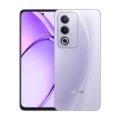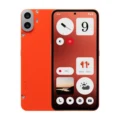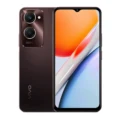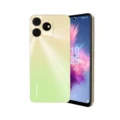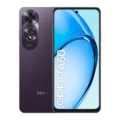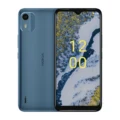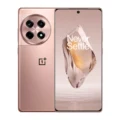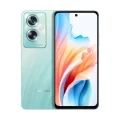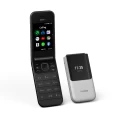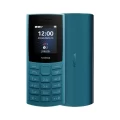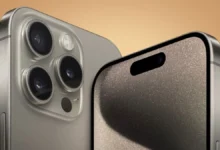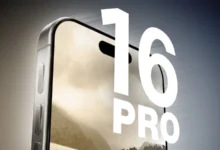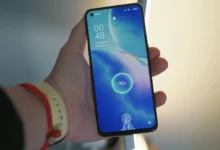Infinix Zero 20



-
Display: 6.7 inches (17.02 cm)
-
CPU: MediaTek Helio G99
-
RAM: 8GB
-
ROM: 128GB / 256GB
-
Camera: 108MP
-
Battery: 4500 mAh
Specifications
General
| Name | Infinix Zero 20 |
| Brand | Infinix |
| Model | Zero 20 |
| Announced | 26 September, 2022 |
| Release Date | 27 September, 2022 |
| Manufacturer Manufacturer Company: A manufacturer is a company engaged in the production of products. | Infinix |
| Made in Made in: Made in is a label or indication on a product that specifies the country where the product was manufactured or produced. | China |
Display
| Display Type | AMOLED |
| Screen Size | 6.7 inches (17.02 cm) |
| Resolution | 1080 x 2400 pixels |
| Aspect Ratio | 20:9 |
| Pixel Density Pixel Density: Pixels per inch and pixels per centimetre are measurements of the pixel density of an electronic image device, such as a computer monitor or television display, or image digitizing device such as a camera or image scanner. | 393 ppi |
| Refresh Rate | 90 Hz |
| Multitouch Multitouch: Smartphone multitouch is a technology that allows the screen to recognize and respond to multiple touch points simultaneously. It enables users to perform gestures like pinch-to-zoom, rotation, and swiping with multiple fingers, enhancing the overall interactivity and usability of the device. | |
| Color Depth Color Depth: Color depth or colour depth, also known as bit depth, is either the number of bits used to indicate the color of a single pixel, or the number of bits used for each color component of a single pixel. When referring to a pixel, the concept can be defined as bits per pixel. | 1.07 billion colours |
| Bezel-less Display Bezel-less display: A bezel-less display minimizes or eliminates the non-display areas around the screen, providing a sleek, immersive look and maximizing the visual experience. | Yes, with a punch-hole display |
| Brightness | 1000 nits |
| Screen to Body Ratio Screen-to-body ratio: Percentage of a device's front surface occupied by the display, indicating how efficiently the space is used for the screen. Higher ratios mean more immersive displays. | 92% |
Design
| Height | 164.43 mm |
| Width | 76.66 mm |
| Thickness | 7.98 mm |
| Weight | 196g |
| Material Built Material: The physical construction materials of a smartphone, influence its durability, weight, and aesthetic qualities. Common materials include metal, glass, plastic, ceramic, etc. | Front Glass, Aluminum Frame |
| Colors | Space Gray, Glitter Gold, Green Fantasy |
| Ruggedness | Dustproof |
Camera
| Rear Camera | Triple |
| Resolution |
108 MP f/1.75, Wide Angle, Primary Camera 13 MP, Ultra-Wide Angle Camera 2 MP Depth Camera |
| Autofocus | Yes |
| Rear Flash | Yes, Quad LED Flash |
| Image Resolution | 12000 x 9000 Pixels |
| Settings | Exposure compensation, ISO control |
| Shooting Modes |
Continuous Shooting High Dynamic Range mode (HDR) |
| Camera Features | Digital Zoom, Auto Flash, Face detection, Touch to focus |
| Video Capture |
2K at 30FPS 1080P at 60FPS 1080P at 30FPS 720P at 30FPS |
| Front Camera | Single |
| Resolution | 60 MP f/1.85, Wide Angle, Primary Camera |
| Front Flash | Yes, Dual LED |
| Autofocus | Yes |
| Video Capture |
1080P at 60FPS 1080P at 30FPS 720P at 30FPS |
Battery
| Capacity Battery Capacity: Battery capacity in smartphones refers to the amount of energy a battery can store, typically measured in milliampere-hours (mAh). It indicates how long a battery can power the device before needing a recharge. | 4500 mAh |
| Battery Type | Li-Polymer |
| Removable Removable Battery: A removable battery in a smartphone is a battery that users can easily take out and replace without tools. Removable batteries were more common in older models; modern smartphones favor non-removable batteries for sleeker designs and better water resistance. | |
| Talk Time |
2G: 42H 3G: 28H |
| Standby Time | 725H |
| Fast Charging | Yes, 45W is Supercharging (75% charge in 30 minutes) |
Performance
| Chipset Chipset: In smartphones, the chipset is like the device's brain, controlling everything from processing tasks to managing connectivity. It includes the CPU, GPU, modem, and other components, determining the device's performance and capabilities. Different smartphones use different chipsets made by companies like Qualcomm or MediaTek. | MediaTek Helio G99 |
| CPU CPU (Central Processing Unit): The CPU, commonly known as the processor, is responsible for processing instructions to perform various functions that enable a device to operate properly. Often described as the brain of computers, smartphones, and tablets, the CPU plays a crucial role in executing tasks and running applications on these devices. Smartphones and tablets rely heavily on their processors to carry out every task, from running apps to managing system operations. Therefore, the processor is an incredibly important factor to consider when selecting any type of computing device, including smartphones. | Octa-core (2.2 GHz, Dual core, Cortex A76 + 2 GHz, Hexa Core, Cortex A55) |
| Architecture Instruction Set Architectures (ISAs): In the context of smartphones, "architecture" refers to the design and structure of the processor, which determines how it processes information and executes instructions. This encompasses the processor's instruction set, memory management, and overall design principles. One common term related to architecture is "64-bit architecture," which has significant implications for performance and capabilities. | 64 bit |
| Fabrication Semiconductor Fabrication: Fabrication in the context of semiconductors and microprocessors refers to the process of manufacturing integrated circuits (ICs) or chips. This involves creating the physical structures of a chip, such as transistors and other electronic components, on a silicon wafer. The term "fabrication" is often used interchangeably with "process node" or "technology node," which indicates the manufacturing technology used to create these chips. | 6 nm |
| GPU GPU (Graphics Processing Unit): The GPU in a smartphone is a specialized processor designed to handle the rendering of images, animations, and video, as well as other tasks involving graphics and visual data. It works alongside the CPU (Central Processing Unit) to deliver a smooth and visually rich experience. | Mali-G57 MC2 |
| RAM Random Access Memory (RAM): RAM is a type of computer memory that is used to store data temporarily while a device is in use. RAM is a critical component in smartphones, enabling fast access to data, smooth multitasking, and efficient operation of applications. The amount and type of RAM can significantly impact the performance and user experience of a smartphone. | 8GB |
| RAM Type | LPDDR4X |
| User Interface User interface (UI): A custom user interface (UI) is a layer of software that manufacturers often develop on top of the base operating system to differentiate their devices, enhance user experience, and add unique features. Custom UIs provide additional functionalities, themes, and design elements that are not present in the stock OS. | XOS |
| Operating System Operating System (OS): The operating system is the core software that manages all the hardware and software resources on a smartphone. It provides a platform for running applications and controls basic functions such as managing memory, processing tasks, and handling input/output operations. | Android v12 |
Storage
| ROM ROM (Read-Only Memory): In the context of smartphones and other electronic devices, ROM typically refers to the built-in storage where the operating system, system files, and pre-installed apps are stored. | 128GB / 256GB |
| MicroSD Card MicroSD Card Slot: A microSD card is a small, portable storage device used to expand the storage capacity of electronic devices, including smartphones, tablets, digital cameras, and more. It's inserted into a device's MicroSD card slot to store extra photos, videos, music, and other data. | Yes, microSDXC (dedicated slot) |
| Expandable Storage | Yes, Up to 2TB |
| Storage Type Storage Type: In smartphones, storage types typically include built-in eMMC or UFS (Universal Flash Storage) for internal storage, and expandable storage options like MicroSD cards. | UFS 3.1 |
Network
| Number of SIM | Dual-SIM |
| SIM Size | Nano |
| SIM Slot Type | 2 nano SIMs + 1 micro SD |
| Network Support | 2G, 3G, 4G |
| Network Speed | HSPA 42.2/11.5 Mbps, LTE Cat4 150/75 Mbps |
| Technology | GSM / HSPA / LTE |
| VoLTE VoLTE (Voice over LTE): VoLTE is a technology that allows voice calls to be made over a 4G LTE network, rather than the traditional 2G or 3G networks. In summary, VoLTE enhances call quality and functionality by using the 4G LTE network for voice communications. | |
| 2G Bands 2G (Second Generation): 2G is a wireless technology standard for mobile telecommunications that was introduced in the 1990s and enabled the transmission of digital voice and data services, using digital transmission instead of analog. It has slower data speeds compared to later generations like 3G and 4G. | GSM 1800 / 1900 / 850 / 900 MHz |
| 3G Bands | UMTS 1900 / 2100 / 850 / 900 MHz |
| 4G Bands |
TD-LTE 2600(band 38) / 2300(band 40) / 2500(band 41) FD-LTE 2100(band 1) / 1800(band 3) / 2600(band 7) / 900(band 8) / 700(band 28) / 1900(band 2) / 1700(band 4) / 850(band 5) / 800(band 20) |
| GPRS GPRS (General Packet Radio Service): General Packet Radio Service is a packet-oriented mobile data standard on 2G and 3G cellular communication networks' global system for mobile communications (GSM). In summary, GPRS is a mobile data service that enhances the data capabilities of 2G and 3G networks, providing basic internet and multimedia services. | |
| EDGE EDGE (Enhanced Data rates for GSM Evolution): Enhanced Data rates for GSM Evolution is a technology used to improve the data transmission rates of 2G GSM networks. In summary, EDGE boosts the data transmission capabilities of 2G networks, providing faster speeds and improved performance for mobile internet access. |
Connectivity
| Wi-Fi Wi-Fi: Wi-Fi is a wireless networking technology that allows electronic devices to connect to a local area network (LAN) wirelessly, typically using the 2.4 gigahertz (GHz) or 5 GHz radio frequency bands. | Yes, Wi-Fi 5 (802.11 b/g/n/ac) 5GHz |
| Wi-Fi Features | Mobile Hotspot |
| Bluetooth | Yes, Bluetooth v5.0 |
| GPS GPS (Global Positioning System): GPS originally Navstar GPS, is a satellite-based radio navigation system. It is a satellite-based radio navigation system, GPS permits users to determine their position, velocity, and the time 24 hours a day, in all weather, anywhere in the world, In order to locate your position, your device or GPS receiver must have a clear view of the sky. | Yes, with A-GPS, GLONASS |
| NFC NFC (Near Field Communication): NFC is a wireless technology that enables devices like smartphones and payment terminals to communicate when they're close together, facilitating contactless transactions and data transfer. | No |
| OTG OTG (On-The-Go): The full form of OTG is On-The-Go . OTG is a USB (Universal Serial Bus) standard that allows USB devices to be connected. Without using a computer connection, USB OTG items can connect. You can connect your mobile phone or tablet to various gadgets using a USB OTG link. | Yes |
| IR Blaster Infrared (IR) blaster: Some smartphones may come with an infrared (IR) blaster, which allows your smartphone to act as a universal remote control for controlling other devices, such as TVs, set-top boxes, and home appliances, that use infrared technology for communication. | No |
| USB Interface | USB Type-C, USB charging |
Sensors
| Fingerprint Fingerprint: A fingerprint, in the context of smartphones and other devices, refers to a biometric authentication method that uses the unique patterns on a person's fingertip to verify their identity. | |
| Face Unlock Facial Recognition: Face Unlock is a biometric authentication feature found in many smartphones. It uses facial recognition technology to identify and authenticate users, allowing them to unlock their devices simply by looking at the front-facing camera. | |
| Other Sensors | Accelerometer, Ambient Light Sensor, Proximity Sensor, E-compass, Gyroscope |
Multimedia
| FM Radio | |
| Loudspeaker | Yes |
| Earphone Jack | 3.5 mm |
| Voice Recorder | Yes |
| Video Playback | 3GP, MP4, AVI |
| Audio Playback | MP3, MIDI, AMR, WAV, AAC |
| Video Formats | Up to 2K at 30fps |
| Image Formats | PNG, JPEG, BMP, GIF |
If you’re looking for a smartphone that can keep up with your active lifestyle, the Infinix Zero 20 might be the perfect fit for you. In this review, I’ll be taking a closer look at its rugged design, long battery life, and advanced camera features.
INFINIX ZERO 20 DETAILS
The Infinix Zero 20 is a premium mid-range smartphone that stands out for its innovative features and reliable performance. It is designed for those who demand the best in terms of technology and design.
One of the standout features of the Zero 20 is its 6.7-inch Full HD+ display with a 90Hz refresh rate. This means that you can enjoy smooth and fluid visuals while watching videos or playing games. The collection also offers an immersive viewing experience with vivid colors and sharp details.
Under the hood, the phone is powered by a MediaTek Helio G99 chipset, making it a powerhouse that can handle even the most demanding tasks. The phone comes with 6GB or 8GB of RAM, and the internal storage options are 128GB and 256GB, providing plenty of space for your photos, apps, and files. If you need even more space, the phone supports expandable storage of up to 2TB via a microSD card.
The Infinix Zero 20 has a 108MP triple camera setup that is capable of capturing stunning photos with excellent detail and clarity. The primary camera is accompanied by a 13MP Ultra-Wide Angle sensor and a 2MP macro lens, making it perfect for capturing all types of photos, from portraits to landscapes. The front-facing camera is 60MP (OIS), making it ideal for taking selfies and making video calls.
The phone runs on Android 12 with the XOS 7.6 operating system, which offers a clean and user-friendly interface. You can enjoy a seamless user experience with easy navigation and intuitive controls. The phone is also equipped with a large 4500mAh battery that supports 45W fast charging, so you can stay connected all day long. For added security and convenience, the phone has a Side-mounted fingerprint scanner and facial recognition.
In terms of connectivity, the Infinix Zero 20 supports dual-SIM 4G LTE, Wi-Fi, Bluetooth v5.0, GPS, and a USB Type-C port for charging and data transfer. The phone is available in several attractive color options, including Space Gray, Glitter Gold, and Green Fantasy design will make it a standout piece in your hand.
Pros and Cons of Infinix Zero 20
When considering purchasing a new device, one of the most important things is whether it will meet your needs and be worth the investment. However, it’s also important to be aware of the potential downsides of the device before making your decision. In this guide, we’ll look at the pros and cons of the Infinix Zero 20 so that you can make an informed decision.
| Pros | Cons |
|---|---|
| 6.7 inches AMOLED display with 90Hz refresh rate | No IP rating for water and dust resistance |
| MediaTek Helio G99 chipset with 8GB RAM | Low-light photos could be better |
| 60MP Front Camera with Dual LED Flash | There is no display protection |
| Large 4500mAh battery with 45W Fast Charging | |
| The expandable internal storage of up to 2TB |
Our Verdict
In conclusion, the Infinix Zero 20 is the perfect choice for those who want a smartphone that is both reliable and innovative. With its impressive display, powerful performance, and excellent camera setup, it offers a unique combination of features that make it a trustworthy choice for anyone looking for a premium mid-range smartphone.
Reviews
Disclaimer Note
The information on this page may not be entirely accurate or up-to-date. Product prices are approximate and may vary based on taxes, import duties, and other factors.





